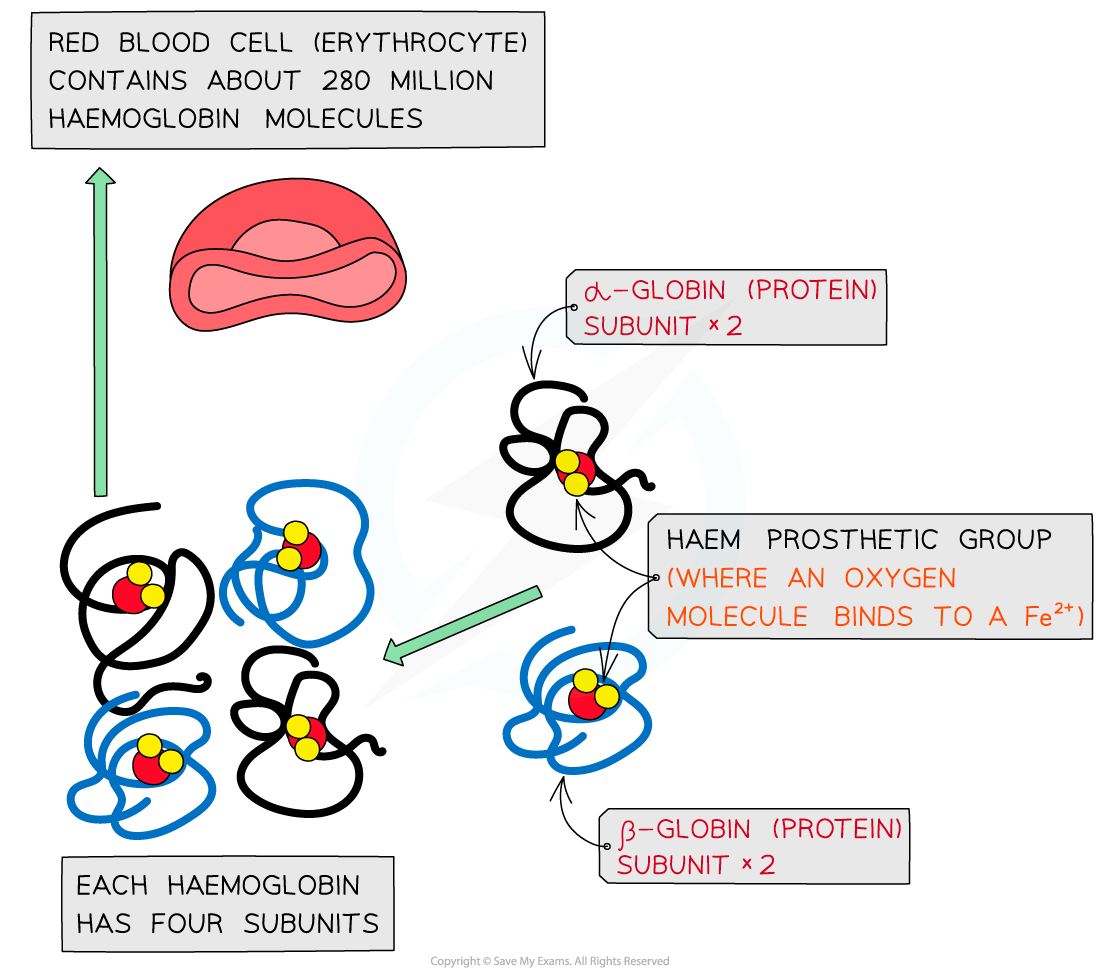- 翰林提供学术活动、国际课程、科研项目一站式留学背景提升服务!
- 400 888 0080
AQA A Level Biology复习笔记1.3.7 The Molecular Structure of Haemoglobin
The Molecular Structure of Haemoglobin
Structure
- Haemoglobin is a globular protein which is an oxygen-carrying pigment found in vast quantities in red blood cells
- It has a quaternary structure as there are four polypeptide chains. These chains or subunits are globin proteins (two α–globins and two β–globins) and each subunit has a prosthetic haem group
- The four globin subunits are held together by disulphide bonds and arranged so that their hydrophobic R groups are facing inwards (helping preserve the three-dimensional spherical shape) and the hydrophilic R groups are facing outwards (helping maintain its solubility)
- The arrangements of the R groups is important to the functioning of haemoglobin. If changes occur to the sequence of amino acids in the subunits this can result in the properties of haemoglobin changing. This is what happens to cause sickle cell anaemia (where base substitution results in the amino acid valine (non-polar) replacing glutamic acid (polar) making haemoglobin less soluble)
- The prosthetic haem group contains an iron II ion (Fe2+) which is able to reversibly combine with an oxygen molecule forming oxyhaemoglobin and results in the haemoglobin appearing bright red
- Each haemoglobin with the four haem groups can therefore carry four oxygen molecules (eight oxygen atoms)

The structure of haemoglobin showing the α–globin and β–globin subunits, the prosthetic haem group with oxygen molecules bonded to form oxyhaemoglobin.
Function
- Haemoglobin is responsible for binding oxygen in the lung and transporting the oxygen to tissue to be used in aerobic metabolic pathways
- As oxygen is not very soluble in water and haemoglobin is, oxygen can be carried more efficiently around the body when bound to the haemoglobin
- The presence of the haem group (and Fe2+) enables small molecules like oxygen to be bound more easily because as each oxygen molecule binds it alters the quaternary structure (due to alterations in the tertiary structure) of the protein which causes haemoglobin to have a higher affinity for the subsequent oxygen molecules and they bind more easily
- The existence of the iron II ion (Fe2+) in the prosthetic haem group also allows oxygen to reversibly bind as none of the amino acids that make up the polypeptide chains in haemoglobin are well suited to binding with oxygen
转载自savemyexams

早鸟钜惠!翰林2025暑期班课上线

最新发布
© 2025. All Rights Reserved. 沪ICP备2023009024号-1








